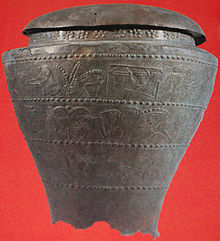
Adria is a town and comune in the province of Rovigo in the Veneto region of northern Italy, situated between the mouths of the rivers Adige and Po. The remains of the Etruscan city of Atria or Hatria are to be found below the modern city, three to four metres below the current level. Adria and Spina were the Etruscan ports and depots for Felsina. Adria may have given its name during an early period to the Adriatic Sea, to which it was connected by channels.

The Iapydes were an ancient people who dwelt north of and inland from the Liburnians, off the Adriatic coast and eastwards of the Istrian peninsula. They occupied the interior of the country between the Colapis (Kupa) and Oeneus (Una) rivers, and the Velebit mountain range which separated them from the coastal Liburnians. Their territory covered the central inlands of modern Croatia and Una River Valley in today's Bosnia and Herzegovina. Archaeological documentation confirms their presence in these countries at least from 9th century BC, and they persisted in their area longer than a millennium. The ancient written documentation on inland Iapydes is scarcer than on the adjacent coastal peoples that had more frequent maritime contacts with ancient Greeks and Romans.
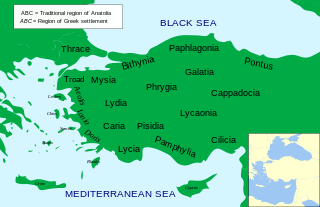
Paphlagonia was an ancient region on the Black Sea coast of north-central Anatolia, situated between Bithynia to the west and Pontus to the east, and separated from Phrygia by a prolongation to the east of the Bithynian Olympus. According to Strabo, the river Parthenius formed the western limit of the region, and it was bounded on the east by the Halys River. Paphlagonia was said to be named after Paphlagon, a son of the mythical Phineus.

Cisalpine Gaul was the name given, especially during the 4th and 3rd centuries BC, to a region of land inhabited by Celts (Gauls), corresponding to what is now most of northern Italy.

Venetic is an extinct Indo-European language, usually classified into the Italic subgroup, that was spoken by the Veneti people in ancient times in northeast Italy and part of modern Slovenia, between the Po Delta and the southern fringe of the Alps, associated with the Este culture.

The Histri were an ancient people inhabiting the Istrian Peninsula, to which they gave the name. Their territory stretched to the neighbouring Gulf of Trieste and bordered the Iapydes in the hinterland of Tarsatica. The Histri formed a kingdom.
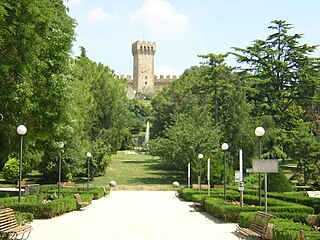
Este is a town and comune of the Province of Padua, in the Veneto region of northern Italy. It is situated at the foot of the Euganean Hills. The town is a centre for farming, crafts and industry worthy of note.

Vigonovo is a town and comune (municipality) in the Metropolitan City of Venice, Veneto, Italy.

Hans Krahe was a German philologist and linguist, specializing over many decades in the Illyrian languages. He was born in Gelsenkirchen.
Adria was a former channel of the Po river delta, passing by the town of Adria, that ceased in the 1st century BC.
Celticisation, or Celticization, was historically the process of conquering and assimilating by the ancient Celts, or via cultural exchange driven by proximity and trade. Today, as the Celtic inhabited-areas significantly differ, the term still refers to making something Celtic, usually focusing around the Celtic nations and their languages.
The Carni were a tribe of the Eastern Alps in classical antiquity of Celtic language and culture, settling in the mountains separating Noricum and Venetia. They probably gave their name to Carso, Carnia, Carinthia, and Carniola.
The Eneti was a people that inhabited a region close to Paphlagonia, mentioned by Homer and Strabo.

The Este culture or Atestine culture was an Iron Age archaeological culture existing from the late Italian Bronze Age to the Roman period. It was located in the present territory of Veneto in Italy and derived from the earlier and more extensive Proto-Villanovan culture. It is also called "civilization of situlas", or Paleo-Venetic.

The Raeti were a confederation of Alpine tribes, whose language and culture was related to those of the Etruscans. Before the Roman conquest, they inhabited present-day Tyrol in Austria, eastern Switzerland and the Alpine regions of northeastern Italy. After the Roman conquest, the province of Raetia was formed, which included parts of present-day Germany south of the Danube.
Pan-Illyrian theories were proposed in the first half the twentieth century by philologists who thought that traces of Illyrian languages could be found in several parts of Europe, outside the Balkan area.
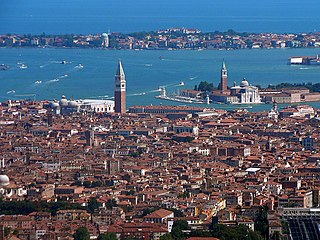
The Metropolitan City of Venice is a metropolitan city in the Veneto region of Italy, one of ten metropolitan cities in Italy. Its capital is the city of Venice. It replaced the province of Venice in 2015 and includes the city of Venice and 43 comuni. It was first created by the reform of local authorities and then established by Law 56/2014. The Metropolitan City of Venice is headed by the Metropolitan Mayor and the Metropolitan Council. Since 15 June 2015, as the new mayor of the capital city, Luigi Brugnaro is the first mayor of the metropolitan city.
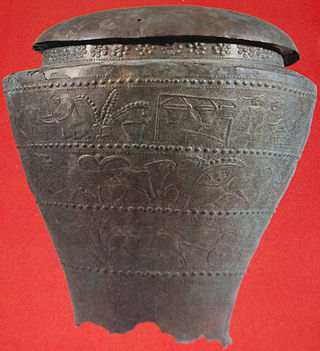
The Benvenuti Situla is a bronze situla that dates to c. 600 BC. It is a product of the situla art that spread north from the Etruscans in this period, in this case to the Este culture that flourished in Este, Veneto during the 7th century BC. The vessel is now conserved in the local National Museum Atestino. The relief work on the vessel depicts scenes of aristocratic life. These include banqueting as well as scenes of military victory. The iconography of the relief scenes of the situla may indicate Etruscan influence.





